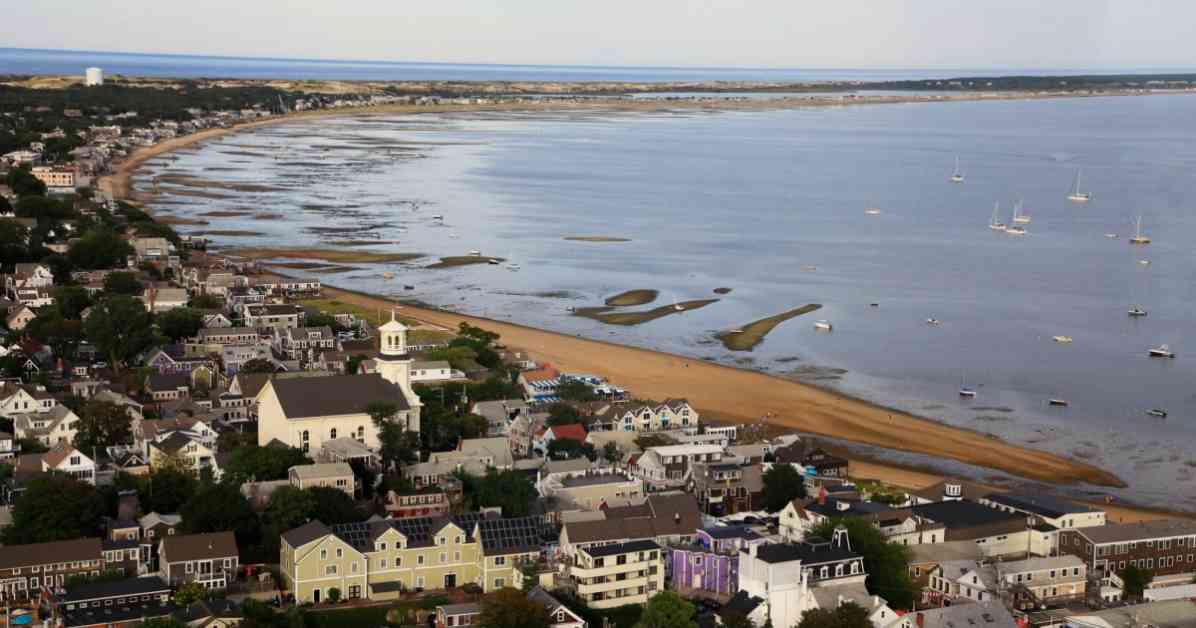A man’s decision to purchase a dream home in a high-risk oceanfront area has raised eyebrows and sparked discussions about the potential consequences of living in such a precarious location.
David Moot, a 59-year-old man, found himself enamored with a beachfront house in Cape Cod, Massachusetts, despite being warned that the property was at risk of being swallowed by the ocean. Having vacationed in the area for over two decades, Moot never imagined that he could afford to own a home there until he came across a listing for a house at 157 Brownell Road in Eastham with an asking price of just $395,000. However, there was a catch – the home was only 25 feet away from a sand bluff that was eroding at a rate of about 3 feet per year due to sea level rise and erosion. This meant that the house could potentially be consumed by the sea within a decade.
Despite the warnings and the looming threat of the property being swallowed by the ocean, Moot decided to take the plunge and purchase the home. “Life’s too short, and I just said to myself, ‘Let’s just see what happens,'” Moot shared in an interview with Bloomberg. He acknowledged the risks involved but remained optimistic about the situation, stating, “It’s going to eventually fall into the ocean, and it may or may not be in my lifetime.”
The Cape Cod area, known for its stunning ocean views and picturesque landscapes, is particularly vulnerable to erosion driven by sea level rise and storms. With warmer ocean temperatures and the impacts of climate change becoming more pronounced, communities in the region are at risk of facing significant challenges in the future. Eastham, often referred to as the ‘gateway’ to the Cape Cod National Seashore, is one such community that is facing the brunt of these environmental changes.
Experts have warned that property values in vulnerable areas like Eastham are likely to decrease over time as the risks associated with living in those locations become more apparent. University of North Carolina Wilmington oceanography professor Dylan McNamara expressed concerns about the future of these communities, stating, “It’s just a matter of time before those property values go down. How they go down, whether it’s a precipitous drop off a cliff or it’s a smoother unwinding, is still up in the air.”
Despite the potential risks and uncertainties, Moot went ahead with the purchase of the beachfront home at a significant discount compared to the seller’s original listing price in 2022. However, being a homeowner in a high-risk area comes with its own set of challenges and financial burdens. Moot is now faced with annual property taxes of nearly $4,000 and insurance costs of a similar amount, which do not cover damages from erosion.
To offset some of these costs, Moot plans to rent out the property to others who can enjoy the serene surroundings and panoramic ocean views that the house offers. By sharing the beauty of the location with others, Moot hopes to recoup some of the expenses associated with owning the property. Despite the uncertainties and potential drawbacks, Moot remains positive about his decision, stating, “There’s always pros and cons and negatives and positives in everything in life.”
As Moot navigates the challenges of owning a home in a high-risk oceanfront area, his story serves as a reminder of the complex issues surrounding coastal erosion, sea level rise, and climate change. The delicate balance between enjoying the beauty of nature and protecting oneself from its destructive forces is a constant struggle for those living in vulnerable coastal communities.
While Moot’s decision to purchase a home in a high-risk area may seem risky to some, it highlights the personal choices and trade-offs that individuals make when it comes to their living arrangements. As the impacts of climate change become more pronounced, it is crucial for homeowners and policymakers alike to consider the long-term implications of living in vulnerable coastal areas and take proactive measures to mitigate risks and protect communities from the effects of environmental changes.
In conclusion, Moot’s story serves as a poignant reminder of the challenges and uncertainties associated with owning property in high-risk oceanfront areas. By sharing his experience, Moot opens up a dialogue about the delicate balance between enjoying the beauty of the natural world and safeguarding oneself against its potential dangers. As coastal communities continue to grapple with the effects of climate change, stories like Moot’s shed light on the complexities of living in vulnerable areas and the need for thoughtful planning and preparedness in the face of environmental challenges.













